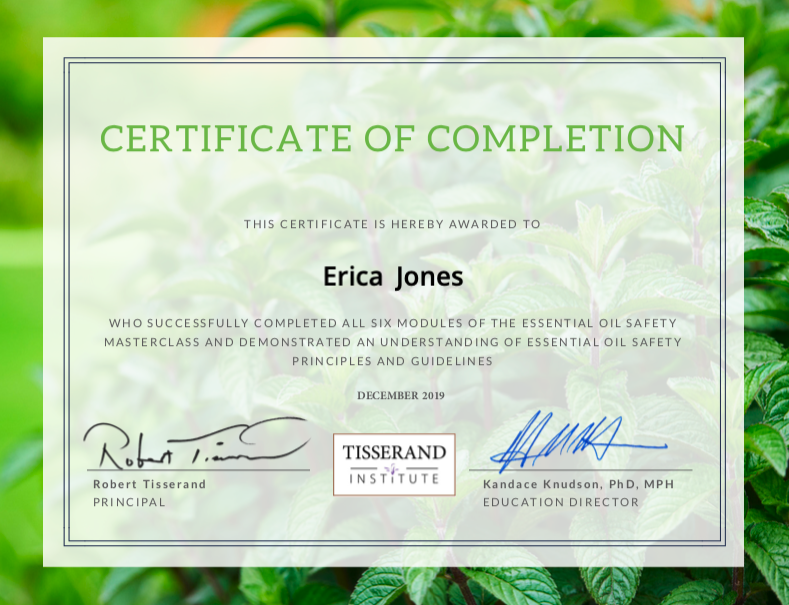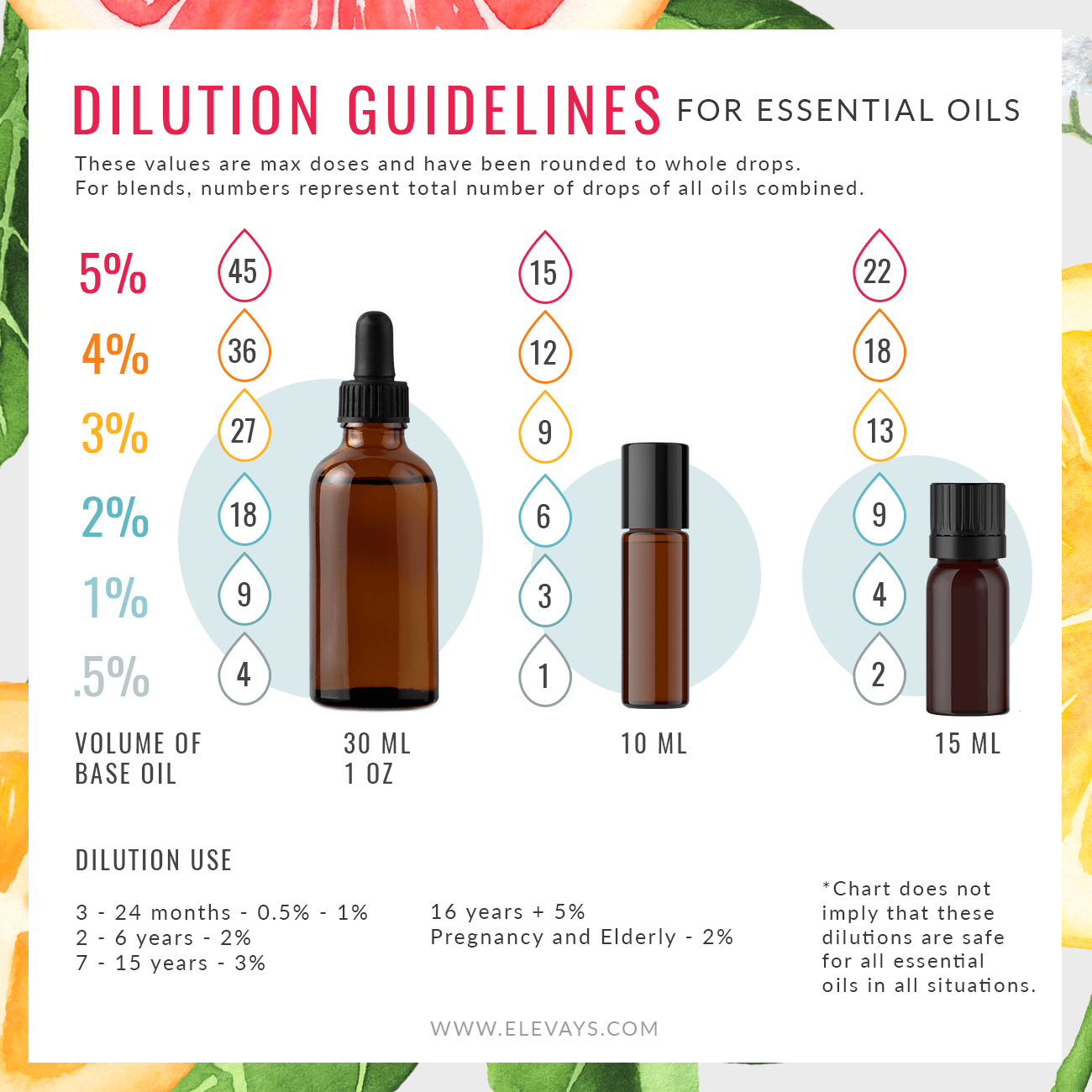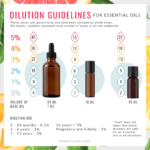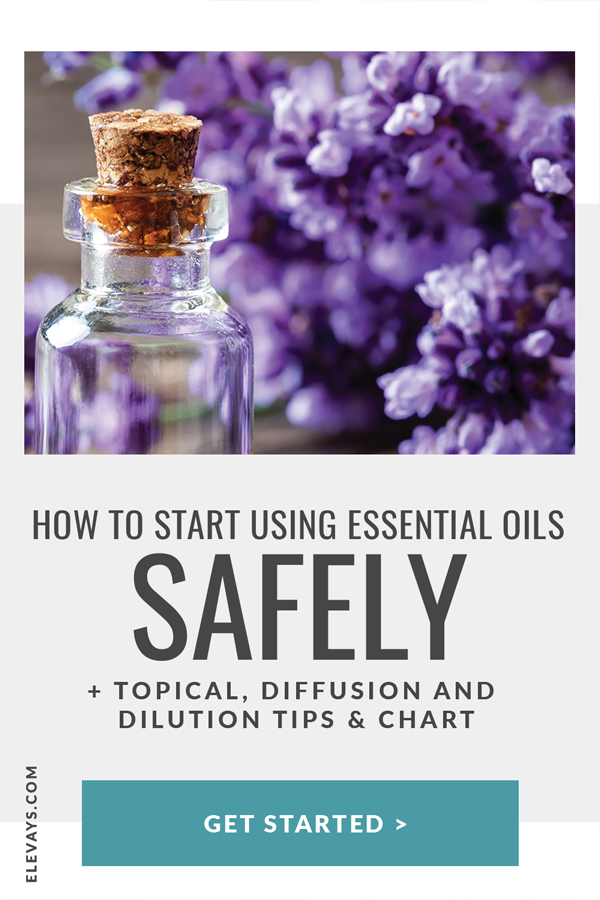Essential oils are the perfect healthy lifestyle tool, and they can enhance your entire family’s wellbeing when they’re used correctly. Millions of people use essential oils as natural remedies daily without any issues. Most people use essential oils without issue, but there are occasions where someone might have a bad reaction. Usually those situations are entirely avoidable when you know how to use oils safely.
I’m a researcher at heart and I write this article with great care since I recently completed Robert Tisserand’s Essential Oil Safety Masterclass. While I LOVE oils and natural remedies just because something is natural doesn’t mean it comes without risk. Too much of anything can have negative side effects.

TRUTH BOMB:
You’re
Already killing it!
If You Were More Consistent With Your Wellness Routine, You’d Be Unstoppable.
The essential oils you buy in bottle form are around 50 to 100 times more concentrated than the plant they came from (1). In other words, essential oils are really powerful.
Most (if not all) essential oils require dilution or they can cause adverse reactions. Certain oils may not work well for various ages either, as children and the elderly are more easily affected by essential oils’ potency.
Use this general safety guide to learn how to properly dilute your oils as well as several other essential oil safety tips. I’ll explain how you can make sure you’re using essential oils safely.
How to Start Using Essential Oils Safely
Because there are three main ways you can use essential oils (aromatic, topical, and internal), the guidelines vary based on how you use essential oils and who’s using the oils. The best way to stay safe is to properly dilute your essential oils, no matter how you plan to use them.
First, beginners must learn a few basics. General safety rules say to:
- Keep the oils out of reach of kids and pets
- Store the bottles with the lids tightly shut in a cool, dark place
- Don’t allow oils to come in contact with eyes (wash hands thoroughly after using oils, especially stronger ones like Oregano)
- Only purchase high-quality essential oils from reputable brands
Essential Oil Safety Guide
There are three main ways to use essential oils – aromatically, topically and internally. By far, aromatically is the most popular way to use oils and comes with the least amount of risk (though there are a few things to keep in mind). Topical and internal use can be very effective, they just carry more risks so you have to understand that before you begin using in oils in those ways. I’ll explain more below.
Diffusion and Inhalation
Aromatherapy is a common way beginners start learning about essential oils, and most people diffuse the oils in water or directly inhale the oil for the effects. Aromatic use is the easiest and safest way to use essential oils because you don’t need to worry about diluting them.
Keep in mind that if you have children or pets around you’ll want to be a little more careful with what oils you are diffusing (avoid the stronger ones like clove, cinnamon, oregano and black pepper) and stick with more mild oils like Lavender, citrus oils and Roman Chamomile.
You typically max out on the the therapeutic benefits of oils after about an hour. This doesn’t mean that diffusion for longer periods is necessarily harmful. Low diffusion for longer periods of time does not carry a significant risk but it also doesn’t have any additional therapeutic benefit. For the best results, diffuse the oils for around 30 minutes to an hour, then turn it off for the same amount of time. This process is more effective for your nervous system and helps you receive more benefits from the oils rather than long-term diffusion.
Be careful with diffusing oils around smaller children, such as infants. I typically avoid it altogether simply because they are much more sensitive to smell unless there’s a really good reason.
Topical Application
Dilution is the vital key to avoiding adverse reactions with topical use.
Don’t apply undiluted essential oils directly onto your skin. This is the most common cause of adverse reactions, particularly skin reactions. With appropriate dilution, you can avoid skin irritation, sensitization, and phototoxic reactions.
Diluting essential oils for topical use involves mixing them with a carrier oil like:
- Fractionated coconut oil
- Jojoba oil
- Almond oil
- Coconut oil
- Olive oil
- Aloe vera gel
However, you can also mix them in with your shampoo, soap, or skin care products.
You must dilute the essential oils based on how you plan to apply them. For example, the dilution range ideal for each product includes:
- Facial cosmetics – 0.2 to 1.5%
- Bath and body products – 1 to 4%
- Body massage – 1.5 to 3%
- Skin problems – 4 to 10%
- Pain or wounds – 5 to 20%
These are the most common scenarios people topically apply essential oils. However, you need to also consider who’s using the oils. Dilute more for children, and always consider which oils are ideal for topical application. Some oils, like cinnamon and oregano, are highly sensitizing to the skin and in most cases should not be applied topically unless there’s a really good reason and they’re heavily diluted.
For those with very sensitive skin testing the oils on a small area of skin first can be beneficial. Doing so can help you identify any possible irritants or sensitizers before you cover a greater surface area of skin. Test your skin by diluting the essential oil blend to the following guidelines:
- 1% dilution – 1 drop of essential oil and one teaspoon (5ml) of a carrier
If you notice a reaction within the first 24 hours, immediately wash the area with soap and water.
Citrus oils are also known to cause photosensitivity and lead to sunburns if you spend time in the sun after application(2). You might burn more easily in the or notice skin discoloration where the oils were applied. The effects can also last longer and create long term skin issues. Typically you need to wait at least 12 hours before going into the sun after topical application of a citrus oil.
Baths
I absolutely LOVE soaking in a bath and use my bath tub multiple times a week. Adding essential oils helps create a luxurious and relaxing way to end the day. However, the bath can quickly go awry if you forget to dilute the oil properly.
Remember, oil and water don’t mix. This means if oils are not mixed properly before adding to the bath, the undiluted oil can sit directly on your skin and cause irritation or burning. The oils are also warmed up by the water, which means they can’t evaporate and can sting like crazy.
For safety, always dilute your essential oils into a base before you add them to your bathwater. Suitable options to disperse the oils include:
- Bubble bath
- Shampoo
- Shower gel
- Castile soap
Carrier oils, like fractionated coconut, jojoba, or olive oil can also be used. But as a warning they can definitely make the bathtub slippery and then we have a whole other safety issue. I much more prefer the other options above.
In a bath, adding between 3 and 12 drops of essential oil for every tablespoon of carrier is a good rule of thumb. We have a very large soaking tub and I add 12 drops of oil to the bath without issue. I also add the mixture under the running water right when the bath starts and it acts a “mixer” to make sure that everything circulates well in the water.
You should also be careful adding certain essential oils to a bath because they can irritate either the skin or the mucous membranes. I don’t recommend adding the following oils to bath water:
- Black pepper
- Cassia
- Cinnamon (and Cinnamon bark)
- Clove
- Oregano
- Hyssop
- Summer savory
- Spearmint
- Thyme
- Wintergreen
- Peppermint
Stick to the more mild skin-loving oils, like lavender, chamomile, and rose (3, 5).
Are Essential Oils Safe to Ingest?
Yes, but proceed carefully. Anything you put into your body must go through the liver and kidneys. High doses of essential oil can build up over time and lead to liver damage. Toxicity risks like this are harder to avoid when ingesting the oils.
When it comes to internal use it’s important that the manufacturer says that the oils are safe to ingest. You also want to use common sense and have a plan for what oil(s) you’re going to ingest and why. I don’t recommend ingesting oils on a regular basis as a preventive mechanism. It can create sensitization and allergic reactions over time and in most cases it’s just not necessary.
Here are some instances where I would consider (and have used) essential oils internally: to fight viruses (like cold and flu), for digestive upset, for sleep support, to support my immune system. In every case I don’t use the oils constantly. It’s for a short period of time and then I stop.
I don’t recommend ingesting oils undiluted or ingesting them in water. Oils and water do not mix. If I’m going to ingest oils, I’ll usually take them in a veggie cap or mix them with a bit of honey and then dilute in hot water to make a tea. This way the oils are emulsified in the honey. That way you don’t have irritation or burning in the mouth.
I’ve also added essential oils to food and recipes. A drop of basil essential oil in your favorite spaghetti sauce is amazing! Just mix with a carrier oil like extra virgin olive oil before adding to the sauce.
Keep in mind with ingesting oils you’ll want to check with your health care provider if you’re taking any medications. Some oils can interfere with medicines.
Essential Oils and Children
You must dilute essential oils more when using them on children. The younger the child, the more you dilute the oil. Aromatherapy and topical use are ideal for children.
Use this basic essential oil dilution guide for children, based on their age. Keep in mind that these are MAXIMUM dilution amounts. You should always start with much less than the maximum, monitor for results and then increase if needed. I typically avoid using essential oils in babies under 3 months unless ther’s a really good reason:
- 3 months to 24 months – Dilute between 0.25 and 0.5%
- 2 to 6 years – Dilute between 1 and 2%
- 7 to 15 years – Dilute between 1.5 and 3%
- 16 years and older – Dilute between 2.5 and 5%
Elderly people and women who are pregnant or breastfeeding typically should use a maximum dilution of 2%.

What to Do If You Have a Reaction
As I stated in the beginning of the article, most people use essential oils without any negative side effects. But in the event you do have a reaction, here’s what to look for: redness, itching, burning and/or pain or hives (tiny blisters).
Please keep in mind that any redness or inflamed skin after application is not a sign that your body is “detoxing.” There have been many irresponsible essential oil “reps” that have stated that skin reactions are a sign that the body is going through detoxification. This is just not true and it’s dangerous information. If you have a skin reaction after applying oils, consider it a reaction and here’s what to do:
- Do NOT apply more essential oils. Seriously, this is the worst thing you can do.
- Wash the skin carefully and gently with soap and water.
- Take off any clothes that have been exposed to the essential oil.
- Be careful to avoid the sun and allow the skin to “air dry” where the reaction occurred.
If you have a reaction you’ll need to be very careful about using the same essential oil in the future. Once the immune system has been primed and a reaction has occurred you’re more likely to experience another reaction in the future. So be really careful down the road.
Understanding how to use oils safely will greatly decrease any risks that you might have. I hope that this article is helpful and that it gives you confidence to add essential oils to your daily life!
Sources:
- Robert Tisserand. The Tisserand Institute. Essential Oil Safety Pages. Retrieved from: https://tisserandinstitute.org/safety-pages/
- American College of Healthcare Science. (2018). Essential Oil Safety: What is Photosensitivity? Retrieved from: http://info.achs.edu/blog/what-is-photosensitivity-with-essential-oils
- Allison Young. (2019). Good Housekeeping. The Best Essential Oils to Add to Your Bath Routine – And How to Do It Safely. Retrieved from: https://www.goodhousekeeping.com/health/wellness/a20707661/essential-oils-in-bath/
- NIH Research. (2007). Lavender and Tea Tree Oils May Cause Breast Growth in Boys. Retrieved from: https://www.nih.gov/news-events/nih-research-matters/lavender-tea-tree-oils-may-cause-breast-growth-boys
- Robert Tisserand. The Tisserand Institute. How to Use Essential Oils Safely. Retrieved from: https://tisserandinstitute.org/safety/safety-guidelines/
- Tori Rodriguez. (2015). The Atlantic. Essential Oils Might Be the New Antibiotics. Retrieved from: https://www.theatlantic.com/health/archive/2015/01/the-new-antibiotics-might-be-essential-oils/384247/
- NIH. Methyl salicylate. Retrieved from: https://pubchem.ncbi.nlm.nih.gov/compound/Methyl-salicylate








READ the Latest
Breakfast
Longevity
Health Habits
Health Habits